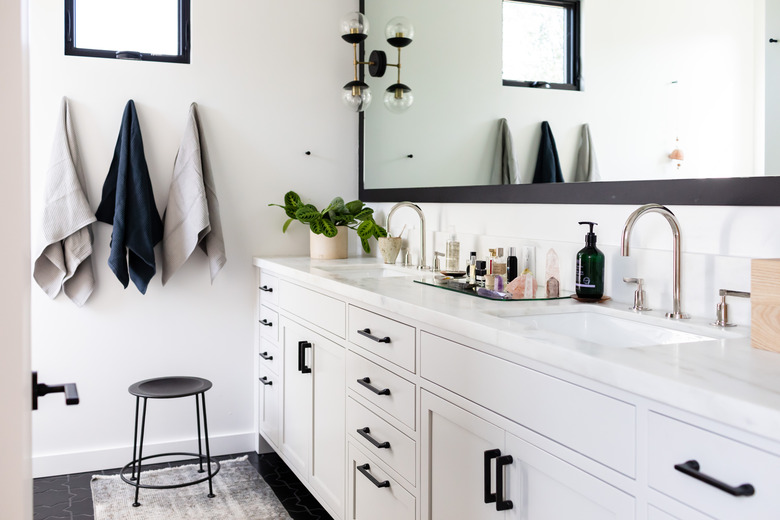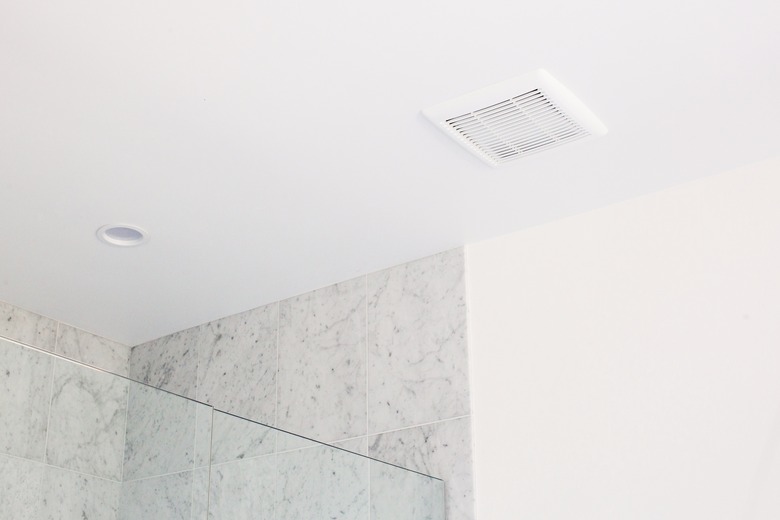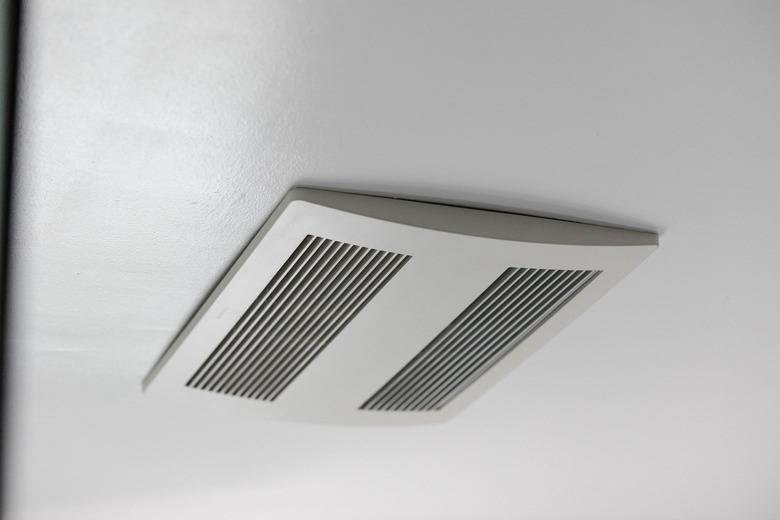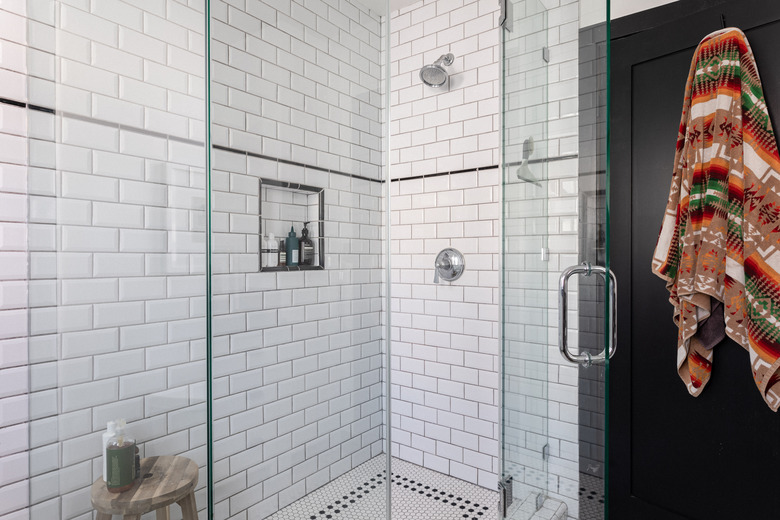Bathroom Ventilation: A Homeowner's Starter Guide
While modern construction techniques do a good job of keeping heated and cooled air inside the house, they also bottle up harmful pollutants and water vapor. To deal with the problem, many areas of the home require mechanical ventilation, and bathroom ventilation may be among the most important.
Every steaming hot shower, long soaking bath and flushing toilet contribute to the moisture in bathrooms. If allowed to stay in the room, the moisture can lead to mold and mildew as well as peeling paint and damaged wallboard. In extreme cases, moisture that is not vented can harm the structural components of the house, such as wall studs and ceiling joists. There are also odors and fumes that need to be expelled from the room.
Sizing Bathroom Ventilation Fans
Sizing Bathroom Ventilation Fans
One way to clear the air is to open a window. However, not all bathrooms have windows, and opening them in cold weather or when the air conditioner is running is impractical and wasteful. That is where the bathroom ventilation fan comes into play.
Bathroom exhaust fans pull room air through ductwork and exhaust it to the outside of the house. They can be installed in the room's walls or in the ceiling, which is the method most often used. There are many different models and styles available. To choose one, you will need to make a number of decisions based on functionality and aesthetics.
One way to start is to choose the exhaust fan that fits the size of your bathroom. Fans are rated by the amount of air they can move in cubic feet per minute (cfm). The goal is to choose a fan that can change the air in the room about eight times per hour.
To do that, find the square footage of the room by multiplying its length times its width. If it is under 50 square feet, get a fan with a 50 cfm rating. For 50 to 100 square feet, add 1 cfm per square foot. Fans come in round numbers, so choose the next-highest cfm for your bathroom.
If you have a ceiling that is higher than the average 8-foot ceiling or if the room is over 100 square feet, you'll need a more powerful fan. In large rooms, you will be adding air-moving power based on bathroom fixtures. Tubs, toilets and showers require 50 cfm per fixture. Jetted tubs require 100 cfm. The Home Ventilation Institute offers information on selecting bath ventilation fans.
Bathroom Ventilation Fan Features
Bathroom Ventilation Fan Features
Bathroom fans have other qualities besides air-moving capability, and one of the most important is the noise they make when in operation. Sound levels for fans are measured in sones. A factory floor might be about 35 sones, while the hum of a quiet refrigerator can be 1 sone. Ventilation fans range from about 4 sones down to 0.5 sone and even lower. Quiet fans are usually high-quality (and typically more expensive) products.
Some fans incorporate other elements that are useful in a bathroom. Many include built-in lighting. Fans with lighting are eligible for the Energy Star Advanced Lighting Package. Energy Star is a volunteer program sponsored by the Environmental Protection Agency that recognizes energy-efficient products. Energy Star bathroom ventilation fans with lighting are on average 70 percent more energy efficient than standard models.
Fans with built-in timers, humidity sensors or motion sensors contribute to using the fan correctly. Timers eliminate the problem of turning on the fan and then forgetting about it, leaving it to run longer than necessary, or not running it long enough to clear the room of steam and humidity. To be the most effective on a standard switch, let the fan run for about 15 minutes after a shower and then turn it off.
A humidistat switches on the unit when it senses high humidity levels in the room. Most let you set the humidity level to trigger the unit. Motion sensors provide the same function. They switch on when someone enters the room, and they stay on for a prescribed amount of time after the person leaves.
Luxury Bathroom Fan Features
Luxury Bathroom Fan Features
Ventilation fans with built-in heating elements warm up the space when you need it. At least one fan manufacturer, Broan Nutone, offers models equipped with LED lighting technology that prevents the growth of bacteria and mold.
Bathroom exhaust fans are yet another household appliance or fixture that may come equipped with Bluetooth technology. This allows you to control the fan from your smartphone. You can turn the fan on or off or adjust the lighting. Some models feature lights of different colors to let you change the mood of the room. Those equipped with speakers let you listen to music.
Obviously, special features add to the cost of the fan unit. You can find a bare-bones model that will clear the room of humidity and other pollutants for about $75. A unit loaded with extras like Bluetooth speakers or special lighting can cost up to $400, especially if it contains a powerful fan for a large room. These costs do not include installation, which could include electrical wiring and running ducts from the bathroom through the roof or the exterior wall of the house.
Bathroom Vent Fan Placement and Installation
Bathroom Vent Fan Placement and Installation
Warning
Initial installation of bathroom ventilation fans should typically be handled by a professional, as wiring and ductwork are required and can be complicated in small spaces like the bathroom.
Some ventilation fans are designed to be installed directly over a tub or shower but some are not. Be sure to check the manufacturer's literature for proper placement. All fans should be connected to ducts that terminate to the outside either through the roof or side wall of the house. To prevent structural damage, fans should never exhaust into an attic or anywhere within the house.
Installation will also require wiring and a wall switch to operate the fan. In most cases, the fan housing is installed through a hole cut into the ceiling. The housing is then fastened to the ceiling joists. The fan assembly is then installed in the housing. Once the ductwork and electrical wiring is connected, a decorative grille is attached.
If you are starting from scratch, you will need to have the wiring and ducts installed. Installing the ducts in confined spaces can be tricky, and you can expect to pay $40 to $100 per hour for labor. Be sure the outside vent opening is not near any roof or soffit vents. These vents can draw the moist air from the bathroom back into the attic.
Bathroom Ventilation Fan Replacement and Maintenance
Bathroom Ventilation Fan Replacement and Maintenance
If you are replacing a properly installed existing fan, the wiring and ductwork may be able to be reused. The new fan and housing may fit into the existing hole in the ceiling. There are also retrofit kits that let you install a new fan within an old housing. It's important to make sure the existing housing, wiring and ducts can accommodate the new kit. If it is just a new look you are after, you can often replace the existing grille with a new one for a fresh appearance.
Maintenance is straightforward. Wipe down the exterior grille with a soft cloth. The grilles are removable so you can take it down for a more thorough cleaning if necessary; just don't use a harsh detergent. When in doubt, follow the manufacturer's directions. Occasionally, you can remove the grille and vacuum the interior of the housing using the dust brush attachment. The motor and fan are lubricated at the factory and do not require any additional maintenance.



